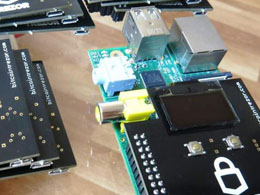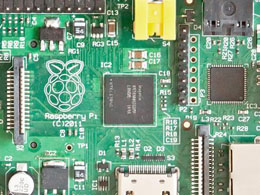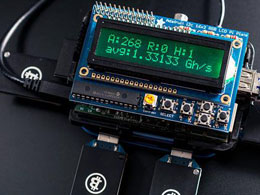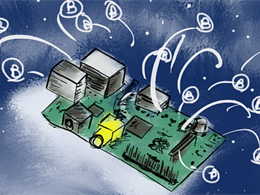
Bitsmart: Open-Source DIY Bitcoin Wallet with Raspberry Pis
Many security-conscious Bitcoin users consider cold storage - on a system physically disconnected from the Internet - as the safest way to store their coins. The downside is that, if you keep your coins on an offline PC at home, you lose access when you leave home. Enter Bitsmart Wallet, a cheap, secure, open source DIY hardware wallet prototype developed by Bitcoin entrepreneur and software developer Ronald Bell. The Bitsmart wallet is powered by two Raspberry Pi credit-card sized computers - one for cold storage and one for online transactions. In the picture, a prototype Bitsmart board....
Related News
The team behind Trezor has announced an accessory for the Raspberry Pi that will turn it into a, somewhat chunky, Trezor wallet. Trezor is a dongle-sized computer that can be used to hold private keys and sign transactions. The project is still in its early days and its developers have made it open source so that anyone can build their own implementation of a Trezor wallet. The Raspberry Pi Shield is a circuit board that is added to the Raspberry Pi that presents the same interface as a Trezor wallet device. That is, two hardware keys and a small OLED screen. From the photos on the Trezor....
For less than the cost of a Trezor Bitcoin Wallet, you can run a full Raspberry Pi Bitcoin node and help support the Bitcoin network. All you need is a Raspberry Pi model B or B+, a 32GB SD card and an Internet connection. Total cost: about $50. The Raspberry Pi isn't like your desktop/laptop that most likely run on Intel or Apple hardware architecture. Raspberry Pis run on ARMs - an embedded architecture used by almost every smartphone. Just like a smartphone, the Raspberry Pi cannot use a desktop or laptop operating system. Luckily, many ARMs versions of Linux exist that work very well....
President Barack Obama has become the first US President to program a computer. The president accomplished this goal on December 8, 2014 at an Hour of Code event. Hour of Code is a global effort to get children excited about coding and to show that anybody can try computer science, and that learning the basics is the best way to prepare for any career today. Also read: Bitsmart: Open-Source DIY Bitcoin Wallet With Raspberry Pis. President Obama, Coder-in-Chief. On its official blog, Code.org (the organization behind the event) claims it reached 53 million students from around the world....
Source. As unlikely as it sounds, the Adafruit learning blog (via the Hackaday blog) has just shown off a Raspberry Pi based bitcoin miner. For those who haven't heard of the Raspberry Pi, it's a small computer on a single circuit board that was designed to be inexpensive enough to help children learn about computer science. Inevitably, hobbyists have taken the Pi to their hearts and put these tiny computers to all sorts of uses, now including mining bitcoins. While this isn't the first Pi to be used in connection with bitcoin mining, it's a good illustration of how a Pi can be put to use....
Raspberry Pi is a series of credit card-sized single-board computers distributed by RS Components, Egoman and Newark Element14. Based on the Broadcom BCM2835 system on a chip (SoC) which includes VideoCore IV GPU and 1GB ram, the Raspberry Pi 2 can be connected to any LCD/LED via HDMI, a keyboard and a mouse to operate as a fully operational computer on various operating systems such as Windows 10 and Linux (Ubuntu). The Raspberry Pi was released in February 2015 and has been sold for a fixed price of US$35 worldwide. Due to its economical advantages and portability, the single board....





